
Which business monitor setup do you choose?
Comparison of 2 screens, an ultrawide screen, and 1 screen
| 2 screens | Ultrawide screen | 1 screen | |
|---|---|---|---|
| Recommended use | Multitasking with daily tasks | Multitasking with daily work, graphic design | Regular tasks |
| Screen space | 44 to 54 inches | 34 to 49 inches | 24, 27, or 32 inches |
| Connection options | Via PC, dock, or daisy chaining | Via PC or dock | Via PC |
Usage situation

2 monitors: multitask and divide
If you put 2 monitors next to each other, you double the available screen space. With 2 monitors of 24 inches next to each other, you have 48 inches for your work. This allows you to open 2 times as many windows or programs next to each other and you work more efficiently. For example, open your text file in one windows and your spreadsheets in the other. This way, you can work more efficiently and you can easily switch. A small downside is the bezel in the middle. If that's too wide, it can be distracting.
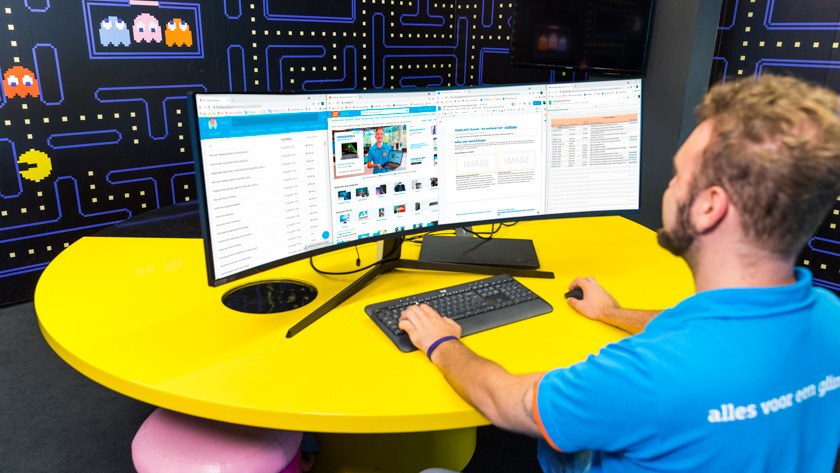
Ultrawide monitor: multitasking on 1 screen
An ultrawide monitor offers 33% more screen space than a regular monitor. In addition to working more comfortably, it's also more ergonomic. You don't have to move your neck as often, so you prevent injuries. In addition, there's no bezel in the middle and you can edit photos and videos in ultrawide settings.
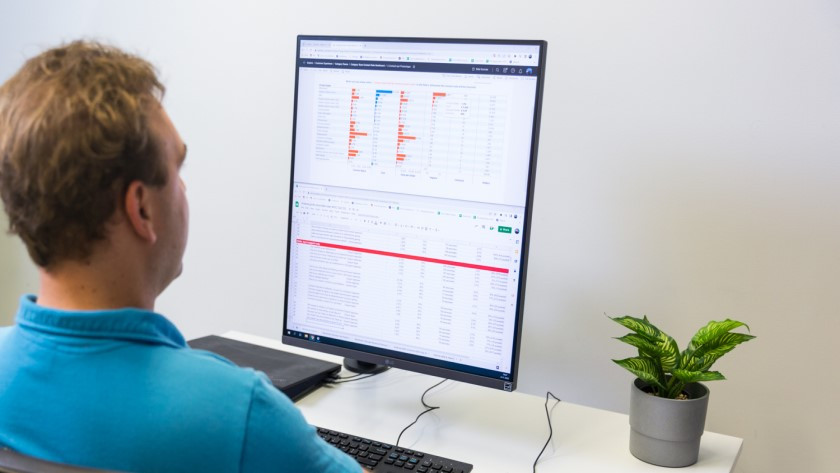
1 monitor: for daily tasks
With 1 monitor, you can keep your desk neat and tidy. You can open about 2 windows or programs next to each other. That's useful if you only work with your laptop, for example. When you connect a laptop to a monitor, it turns into a small desktop. In addition, you don't strain your eyes as much. They have to focus more on a smaller screen, which isn't the case with a larger monitor. The downside of 1 screen is that you have little space for multitasking.
Screen space
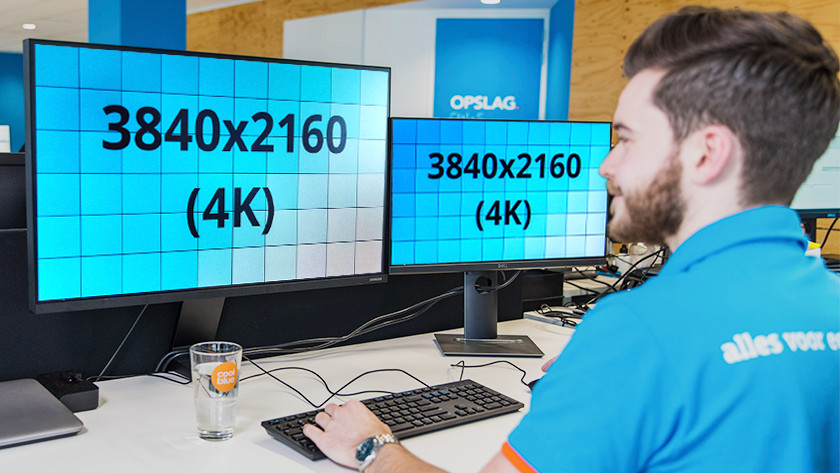
2 monitors: 44 to 54 inches
With a 2-monitor setup, you can easily double the space you can work with. With 2 monitors of 27 inches next to each other, you have 54 inches of screen space. For 2 monitors, you do need a large desk of about 100 to 120cm wide. An extra solution is a monitor arm, with which you can mount screens above your desk. This way, you also have space for a duo setup with a small desk. When you choose 2 monitors, place 2 monitors of the same size next to each other. If the difference is too large, it can strain the eyes.
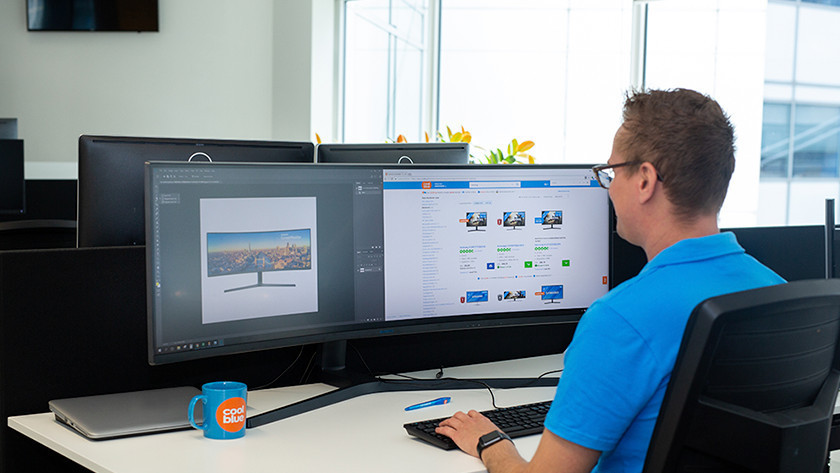
Ultrawide monitor: 34 to 49 inches
With a 49-inch ultrawide monitor, this is even 50% more. This way, you have extra much screen space to open programs and windows next to each other. With an ultrawide or super ultrawide monitor, you need a large and sturdy desk. These monitors weigh more than a regular screen or duo setup. That's why you need a desk of 100 to 120cm wide for a regular ultrawide monitor. For a super ultrawide monitor, you need a desk of at least 140cm wide.
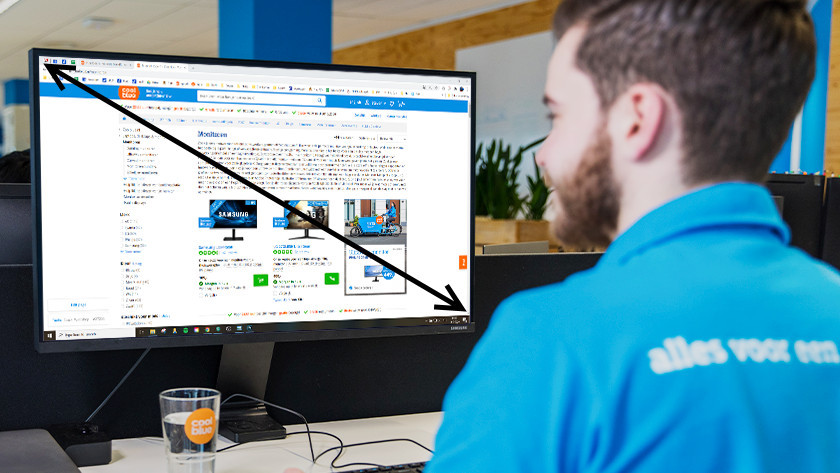
1 monitor: 22, 24, or 27 inches
A single monitor takes up little space on your desk. That's useful if you have a small desk, for example in your home office. Choose a 24, 27, or 32-inch monitor, so you don't fill up your desk. When you choose the size, pay attention to the resolution. A 27-inch Full HD screen might look grainy and stretched, because the screen is too large for the number of pixels. Always choose a higher resolution for a larger screen. For ultrawide monitors, there are special ultrawide resolutions. This way, you won't have a stretched image.
Connection options
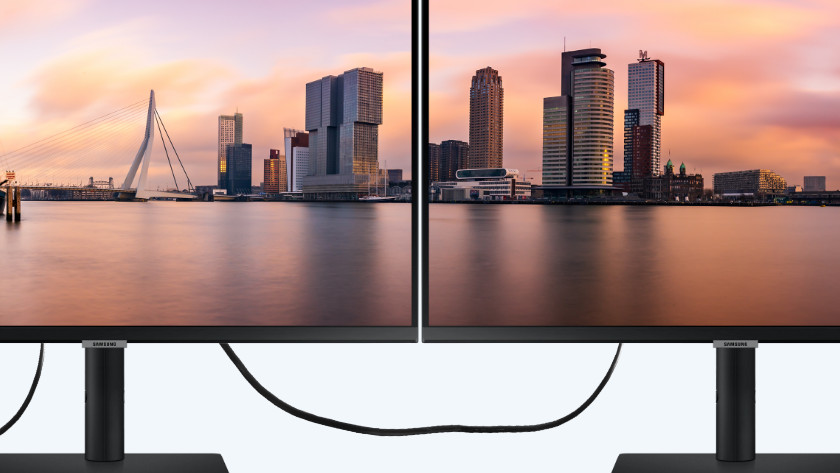
2 screens: PC, dock, or daisy chaining
A duo setup only works if you have enough connectors. There are multiple options for that. For example, connect both monitors directly via the available connectors on your laptop or desktop or use a docking station. Daisy chaining is a third option, with which you connect both monitors to each other. This way, you only use 1 connector and you connect the seconds screen directly to the first one. A monitor has to have at least a DisplayPort 1.2 IN and DisplayPort 1.2 OUT port, or a USB-C port with DisplayPort Alternative Mode for daisy chaining.
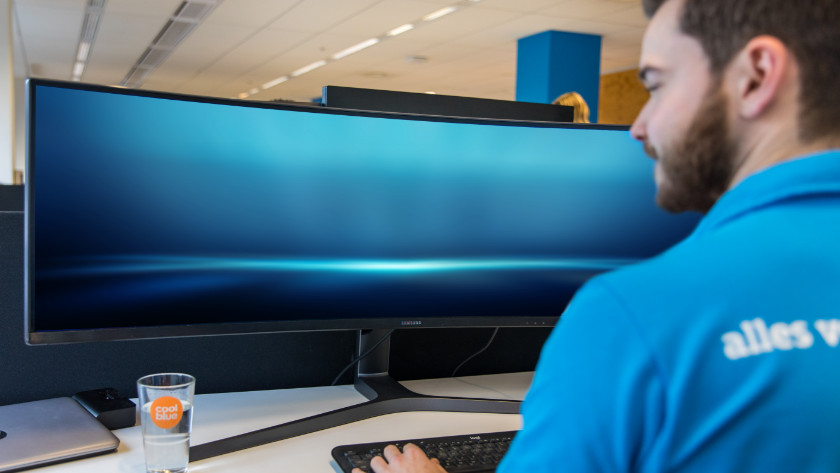
Ultrawide monitor: PC or dock
You can easily connect an ultrawide monitor to your laptop or desktop. You can do so via HDMI, DisplayPort, or USB-C, after which you can also connect accessories via the PC. A docking station has an extra advantage. Thanks to the large size of the monitor, you want to organize everything as best as possible. With a docking station, you can connect all cables in a central spot. This way, you only need 1 cable when you connect everything to your PC.

1 screen: laptop or desktop
You can easily connect a single monitor to your laptop or desktop. Just as with an ultrawide monitor, you can do so via HDMI, DisplayPort, or USB-C and you can connect accessories via the other connectors. The advantage of 1 monitor is that your desk stays organized and you can quickly change your setup. For example, when you choose a USB-C monitor. This allows you to charge your laptop while you work if you connect it via the USB-C port. Some USB-C monitors also have a KVM switch. This way, you can switch between connected devices which you use on 1 monitor.
Ordering a large number of monitors?
Do you want to order multiple monitors, for example for an entire department? Take a look at our business monitor page for B2B. You can also call us directly via 010 79 88 969 or email us via zakelijk@coolblue.nl.


